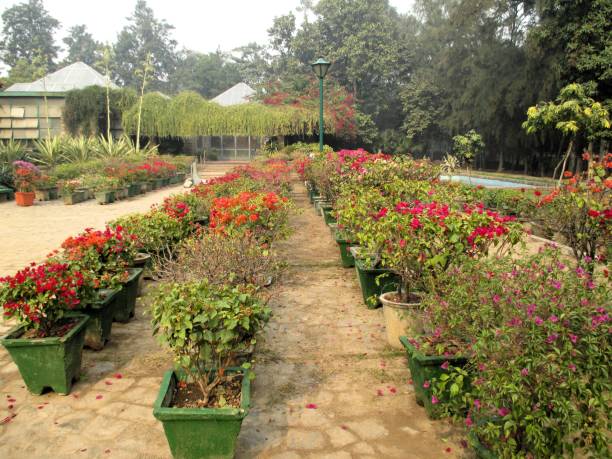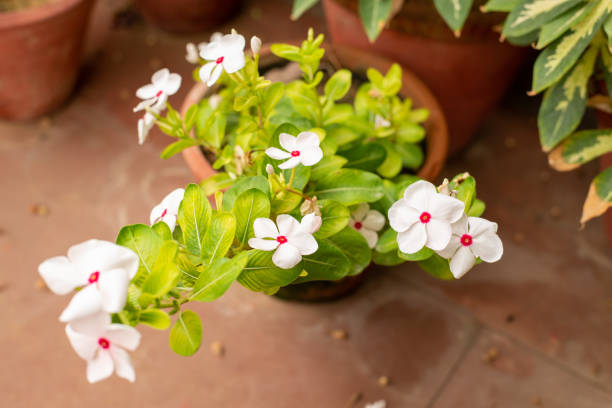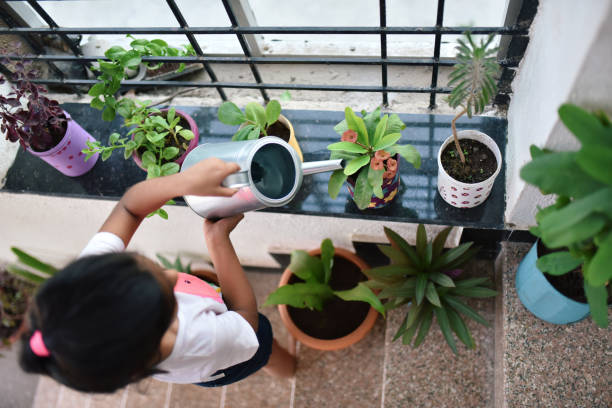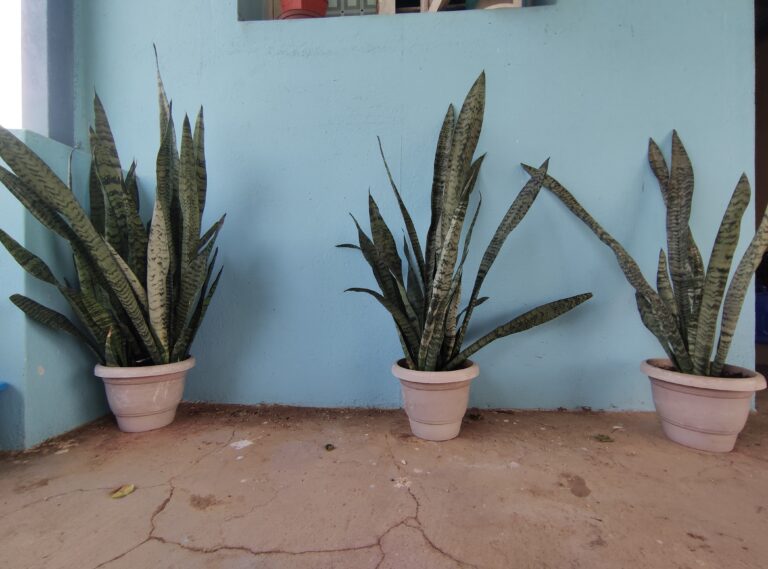“Winter container gardening isn’t about growing a lush garden — it’s about survival. When freezing nights and weeks of no sun hit, my only goal is keeping my green babies alive until spring returns.”
I see a lot of influencers posting about “winter plants to grow” or “best winter flowers for your garden.” But here’s the truth from my seven years of container gardening experience: in my winters, plants don’t thrive — they survive.
My winter days bring bone-chilling temperature drops and sometimes no sun for days, even a whole week. During that season, experimenting with winter container gardening ideas or starting new plants just doesn’t work in my climate. Instead, my focus is on protecting container plants from freezing, maintaining a healthy soil mix in winter, and simply making sure they’re alive when spring finally arrives.
For me, winter gardening is not about chasing Pinterest-perfect pots but learning how to keep them safe, budget-friendly, and stress-free. Mistakes are part of the process — and I’ve made plenty. Overwatering in cold weather, choosing the wrong pots that cracked in frost, and ignoring drainage in damp soil all taught me hard lessons.
Now, my winter gardening routine is practical:
Using DIY hacks to protect pots from freezing in winter with bubble wrap and jute bags.
Checking moisture carefully so I don’t overwater, because winter watering schedule for container plants is completely different from summer.
Grouping pots together for warmth and reusing summer containers instead of buying new ones.
Choosing only a few hardy options like rosemary or kale — but honestly, most of my work is keeping existing plants alive.
If you live in a place with mild winters, you might manage more blooms. But if your climate is like mine — harsh cold, long cloudy days — don’t feel guilty about just keeping your container plants alive until spring. That’s real gardening, not failure.
So, my biggest winter gardening advice is this: focus on survival, not perfection. Winter container care is about patience, small protective steps, and accepting that sometimes the best gardening success is simply seeing your plants sprout again in spring.
Why Winter Container Gardening Is Different

In India, especially in tropical and heat-prone regions, gardening tips usually focus on protecting plants from scorching sun, choosing drought-tolerant plants, and conserving water. But only a handful of gardeners talk about the struggles of keeping container plants alive in bone-chilling winters and during the high-humidity monsoon season.
Cold Weather Challenges for Container Plants (and Why They Struggle More Than Ground Plants)
The main reason container plants suffer more than ground-bed plants is simple: limited root space. Unlike in the ground where roots can spread wide and deep, roots in pots are confined. This restriction makes plants less resilient to sudden seasonal changes.
Another factor is the container material itself. Clay, terracotta, or cement pots lose heat faster, while plastic and wooden containers insulate better. The porosity and aeration of the pot walls affect the potting mix temperature in winter, directly impacting plant health.
In short, while ground soil provides insulation and stability, potted plants are at the mercy of temperature swings. That’s why protecting container plants from freezing is a must for winter survival.
The Myth of ‘Indestructible Winter Plants’
A lot of guides suggest planting so-called hardy winter plants in containers. But here’s the truth: even hardy plants need extra care in pots. In winter, container conditions are harsher than the ground, and plants that might survive outdoors often struggle in a confined pot.
So what does winter container care actually look like?
Avoid starting new plants or seedlings in winter. Cold weather and weak sunlight delay germination and stress young roots.
Focus on plant protection. Mindful watering is key — follow a simple winter watering schedule for container plants to prevent root rot.
Skip fertilizers. Feeding during dormancy only stresses plants.
Prune gently. Remove dead leaves to prevent pests and fungal issues.
Move pots indoors or closer to walls. This shields them from frost and icy winds.
The optimal growing season for starting seeds and transplanting new plants is spring, when temperatures and sunlight align perfectly. Other seasons may support some tolerant crops, but winter is best treated as a time to protect your green babies rather than chase new growth.
My Budget-Friendly Tips for Winter Container Success

Winter gardening doesn’t have to mean spending extra money on new supplies. Over the years, I’ve found that most of the tricks that actually work are simple, low-cost, and often involve reusing what I already have. Here are a few things that kept my plants alive without breaking my budget.
DIY Insulation Hacks for Pots (That Actually Work)
The biggest challenge in winter is not the plant itself, but the roots freezing inside the pot. In my early winters, I thought hardy plants could handle it on their own — I was wrong. A frozen root zone can kill even the toughest plant.
What helped me? Simple DIY insulation hacks.
- I wrap pots with old bubble wrap from packaging — doesn’t look fancy, but it locks in warmth.
- Jute bags or burlap sacks also work great to shield pots from cold winds.
- Another trick is grouping pots together. When pots huddle close, they share warmth and reduce exposure on all sides.
None of this requires buying new products. Just a bit of creativity and using what’s lying around in the house makes a big difference.
Choosing the Right Winter-Friendly Plants for Containers
Now, let’s be real. Winter isn’t the season for experimenting with too many new plants. But if you still want a little life in your pots, go for low-maintenance plants for winter pots.
From my experience, the ones that actually survive and don’t ask for constant attention are:
- Kale and leafy greens – tough enough for a few frosts, and you can still harvest leaves.
- Pansies – cheerful color when everything else looks dull.
- Herbs like rosemary and thyme – they don’t explode with growth, but they stay alive and usable.
Don’t expect them to thrive like in spring, but these are steady companions that can endure the cold with minimal care.
Reusing Summer Pots for Winter Without Spending Extra
In my first few winters, I thought I needed to buy special pots for winter. Truth is, you don’t. Most of your summer containers can easily be reused in winter if you make a few small adjustments.
Here’s what I do:
- If a pot has fewer drainage holes (especially plastic ones), I add a couple more before winter starts.
- I create a budget winter container gardening idea by adding a layer of gravel, coconut husk, or broken clay pieces at the bottom for drainage.
- I elevate pots slightly using bricks or wooden planks — this keeps them off freezing floors and prevents waterlogging.
- Old cracked pots? I line them with a plastic grow bag inside and reuse them instead of throwing them out.
Upcycling not only saves money but also keeps you creative with your garden. Honestly, most of my best solutions came when I tried to make do with what I already had.
🌿 Ever wondered how terrace gardeners keep their plants dust-free in Indian cities? Find out my easy cleaning tricks that actually work!
Seasonal Care Routine That Saved My Plants

Every winter I had to relearn the same lesson: plants don’t need the same care as in summer. Once I understood how to adjust watering, sunlight, and feeding for the season, my plants stopped dying mysteriously.
How I Check Moisture in Winter Without Overwatering
One of the biggest mistakes I made was watering as if it were summer. In reality, the soil dries slower in cold weather. Following a proper winter watering schedule for container plants saved me from root rot.
I keep it simple: the finger-test method. I push my finger about an inch into the potting mix — if it feels dry, I water deeply; if it’s even slightly damp, I wait.
A few real habit changes helped too:
- No fixed daily watering routine in winter.
- Bottom watering when plants are indoors to avoid damp leaves.
- Always letting soil dry in between.
This small shift kept my roots healthier than any fancy “winter hack” I ever tried.
Sunlight Myths in Winter Gardening
I used to think weak winter light meant my plants didn’t need as much sun. Big mistake. The truth is, while winter sun is weaker, container plants still need full sun in winter whenever possible.
Positioning pots where they can get maximum light — near a south-facing window or balcony edge — makes a huge difference. Even if sunlight only peeks out for a few hours, it’s still fuel for the plant.
So no, winter isn’t a “free pass” for low light. If you can’t provide sun, consider rotating pots regularly or even using reflective surfaces to bounce light.
When to Feed (and When NOT to Feed) in Cold Months
I once believed that more fertilizer meant stronger plants in winter. That led to burnt roots and yellowing leaves.
What I learned: fertilizing container plants in winter usually does more harm than good. Most plants are semi-dormant in cold months, so they can’t absorb extra nutrients. Feeding them only stresses the roots.
Now, I avoid fertilizers altogether in winter and wait until spring to restart feeding. If absolutely necessary, I use a very diluted organic feed — but only for plants that show signs of active growth.
Local & Seasonal Insights from My Garden

While many gardening guides are written for temperate regions, I’ve learned that India’s seasonal mix of mild winters and humid monsoons brings its own challenges.
Why Mild Winters Still Stress Container Plants in Warm Climates
Even in regions without frost, container gardening in mild winter climates isn’t as easy as it looks. Pots cool down faster than ground soil, and that sudden chill stresses the roots.
I’ve seen tropical plants slow down or drop leaves, not because of frost, but because the root zone couldn’t adjust to temperature swings between warm days and cold nights. That’s why seasonal adjustments matter, even if you don’t face snow or frost.
Adapting Monsoon–Winter Transitions for Container Plants
Living in South India, I often deal with a tricky transition: from high humidity during the monsoon straight into mild winter.
My biggest takeaways for South India winter gardening tips are:
- Improving drainage after the monsoon — soggy soil plus cooler nights is a recipe for fungus.
- Watch for pests like snails and fungal spots that thrive in damp conditions.
- Avoid heavy watering in this period; the soil stays wet longer.
It’s less about “what to plant” and more about “how to protect” during this seasonal shift.
Final Thoughts — Focus on Joy, Not Perfection
Winter container gardening isn’t about achieving picture-perfect results. It’s about keeping your plants alive, learning through small mistakes, and celebrating the wins (even if it’s just one thriving pot of kale on your balcony). Remember — failures are part of gardening. Every misstep teaches you something new about your plants, your space, and your climate.
I’d love to hear from you — what’s your biggest winter gardening mistake or the one tip that saved your plants? Share your story in the comments so we can all learn together.
👉 If you found this post helpful, you might also enjoy:
- 7 Years of Lessons on Managing Summer Heat Stress in Containers
Pingback: Top 3 Essentials for Container Gardening Success: Sunlight, Space & Drainage Explained